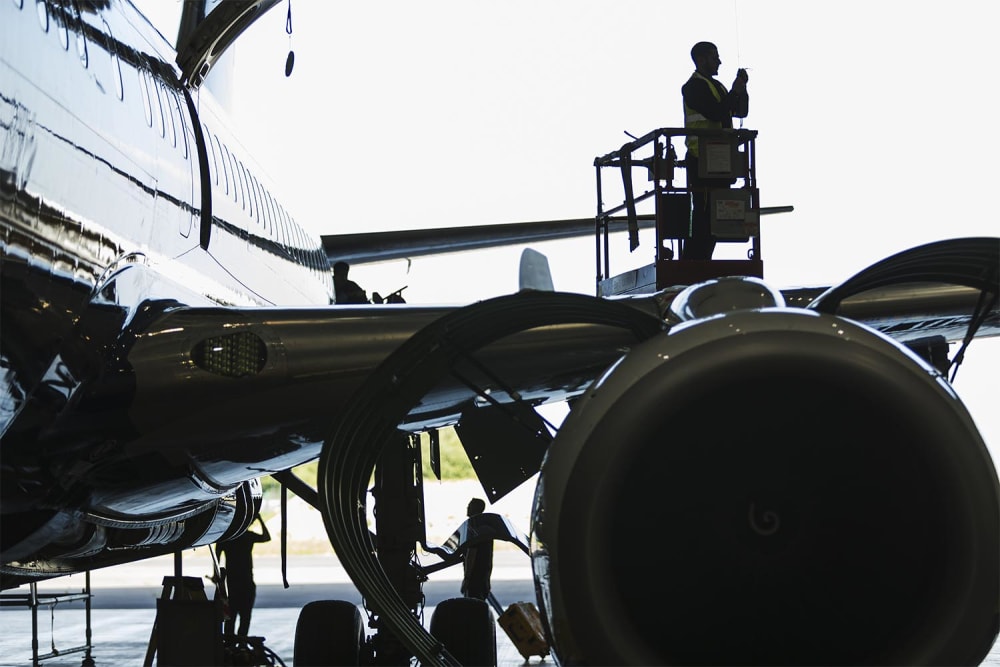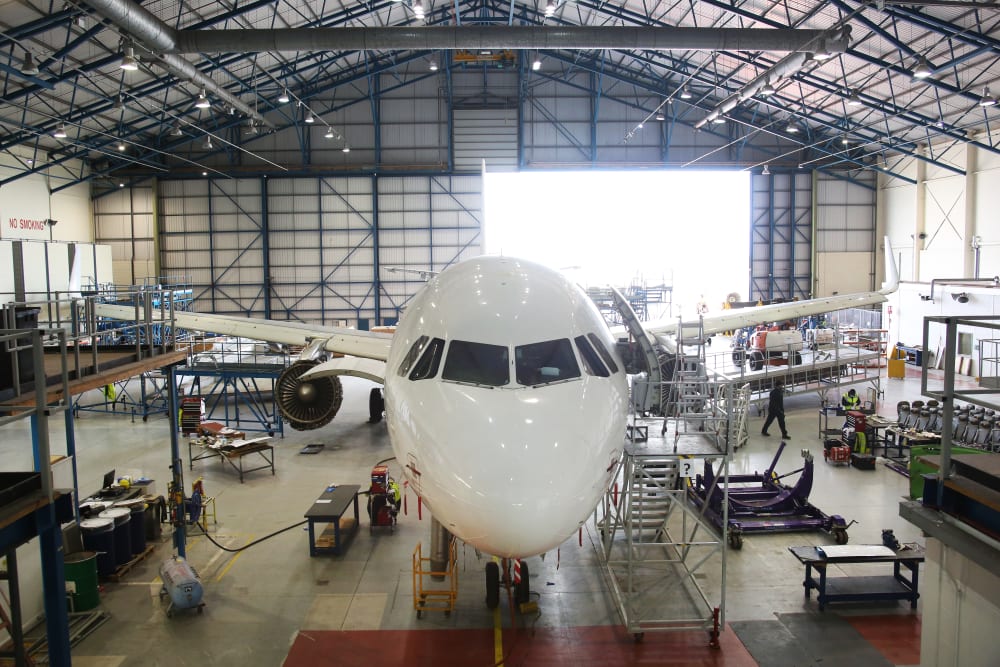SHIFTING FOCUS – AVIATION MAINTENANCE HEADS IN-HOUSE
Published Tuesday, 29th April 2025Chris Coleman, Managing Director
The post-pandemic aviation sector is soaring, with passenger numbers mostly back to pre-COVID levels. More aircraft in the skies means more maintenance slots required to safely keep them there. Our MD, Chris, has looked at how this growing demand is making both airlines and MROs look carefully at the way they operate.
The COVID-19 pandemic acted as a catalyst for change throughout the maintenance sector, with global travel grinding to a halt, many airlines and MROs were forced to furlough staff, or worse, make cuts that led to widespread job losses and, tellingly, a glut of early retirements.
Its impact was also keenly felt within the global supply chain, with the production, transportation and delivery of key components, parts and materials hugely affected.
The challenges of a shrinking pool of talented engineers, an unreliable supply chain and a rapidly growing need for available maintenance slots has meant a shift in focus for many businesses.
For airlines, this has come in the form of opening (or returning to) their own maintenance operations. The likes of easyJet, which has brought line maintenance back in-house in seven UK airports, or Air India which is planning to open its own maintenance facilities in 2025, being recent examples.

Of course, for airlines the potential to save on costs by managing their maintenance themselves is a big draw – but what does that mean for independent MROs like Caerdav?
You could see this as a death knell for any organisation not affiliated to an airline or aircraft OEM. With them seemingly taking more of the pie themselves, surely there won’t be much left? But that isn’t the case at all. The continued recovery of the industry means there is plenty of pie to go around. The demand for maintenance continues to far outstrip the available supply, something that isn’t likely to change any time soon.
In fact, according to the latest edition of the Global Fleet and MRO Market Forecast 2024-2034 from business consultancy Oliver Wyman, the size of the global aviation fleet is set to increase by 28% over the next 10 years, expanding to 36,400 aircraft by 2034.
Looking further ahead, Airbus forecasts a demand for 42,000 new aircraft by 2044, with Boeing upping that projected figure to 43,975. Both cite that new technologies and aircraft types will be required to help reduce carbon emissions and improve sustainability across the industry.
Does that mean that independent MROs can rest on their laurels, safe in the knowledge they will always be required? Not at all. Many, including Caerdav, have also shifted their focus internally, looking at their operation and the services they can provide to improve efficiencies, reduce costs and deliver quicker aircraft turnaround times.
By increasing in-house capabilities, for example, MROs can deliver additional work, such as non-destructive testing (NDT), component maintenance, heat treatments, machining, parts supply or providing on-site paint. This allows MROs like Caerdav to deliver more rounded maintenance packages to their customers.
Of course, MROs, airlines or OEMs still often opt to outsource this work, meaning the same pool of third-party suppliers regularly vying for the business, this competition can result in scheduling conflicts or delays in parts delivery, for example, slowing the completion of work on the aircraft in the hangar.
The ’in-house’ ethos helps to alleviate this issue, meaning more of the work can be handled when required, ensuring quicker turnaround times and in-turn, opening up more available maintenance slots.
Cutting down on the use of outsourced suppliers also helps to deliver improved sustainability benefits. By reducing parts, tools or component transfers – whether by road or air – the associated carbon emissions are removed. For an industry that is consistently faced with questions on how it intends to lessen its environmental impact, this approach offers a small, but no less valid, response.
Looking internally is also a way for the MRO industry to address the dwindling reserves of skilled engineers. To put it bluntly, Boeing’s 2024 Pilot and Technician Outlook estimates that globally, the aviation industry will need to find 716,000 new technicians by 2044 – up from 640,000 quoted in the same report just 12 months prior – with 167,000 required in Europe alone.
One way for businesses to counter this is with their own apprenticeship schemes, working with local colleges to find and nurture the next generation of aircraft mechanics, technicians and engineers.
Caerdav’s award-winning apprenticeship programme is a testament to what can be achieved if businesses find the right partners to work with. Tapping into an enthusiastic pool of local talent in South Wales, graduates of the scheme have already been welcomed into permanent roles, helping to increase maintenance output and offer the expanded in-house capabilities that are driving the business forwards.

